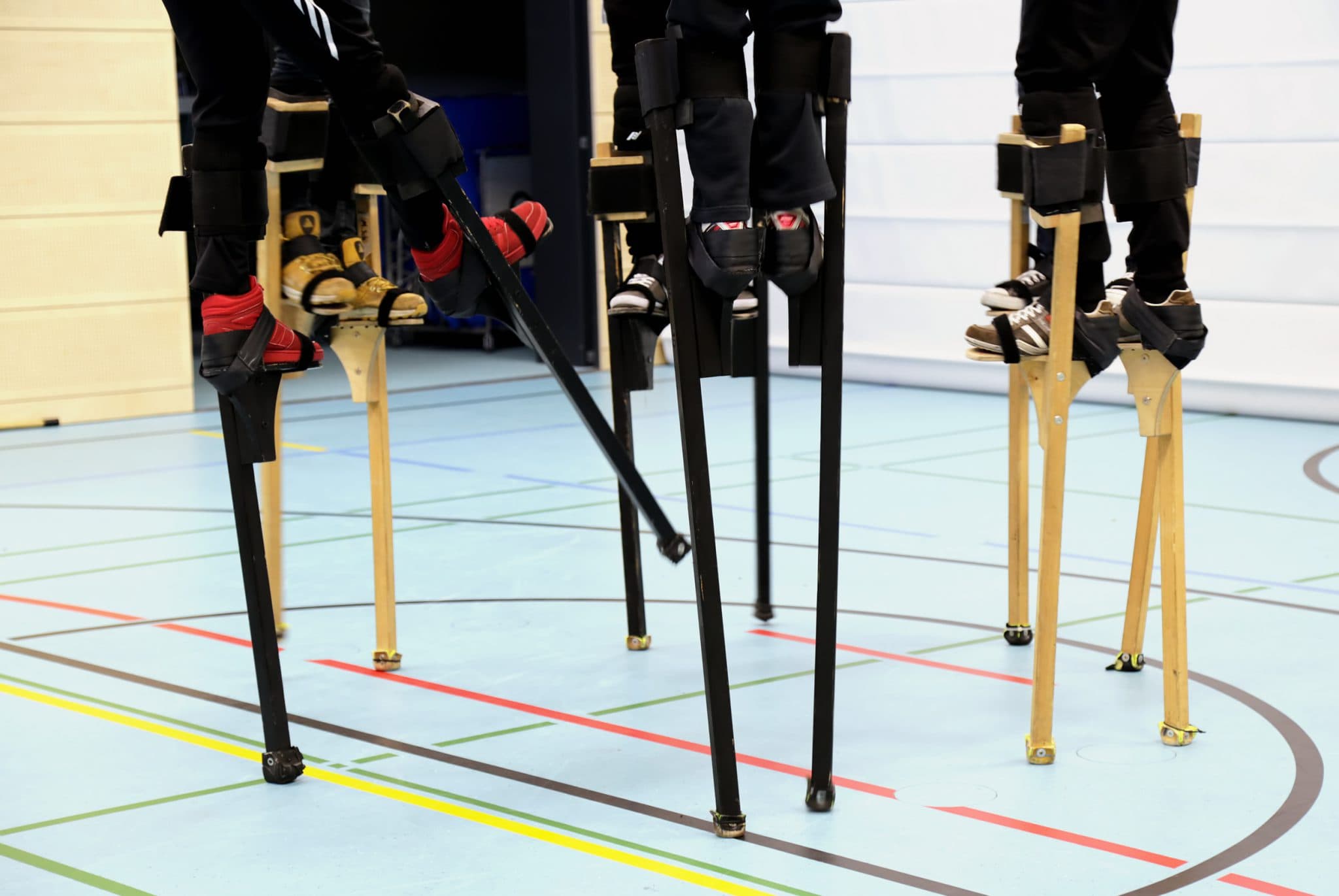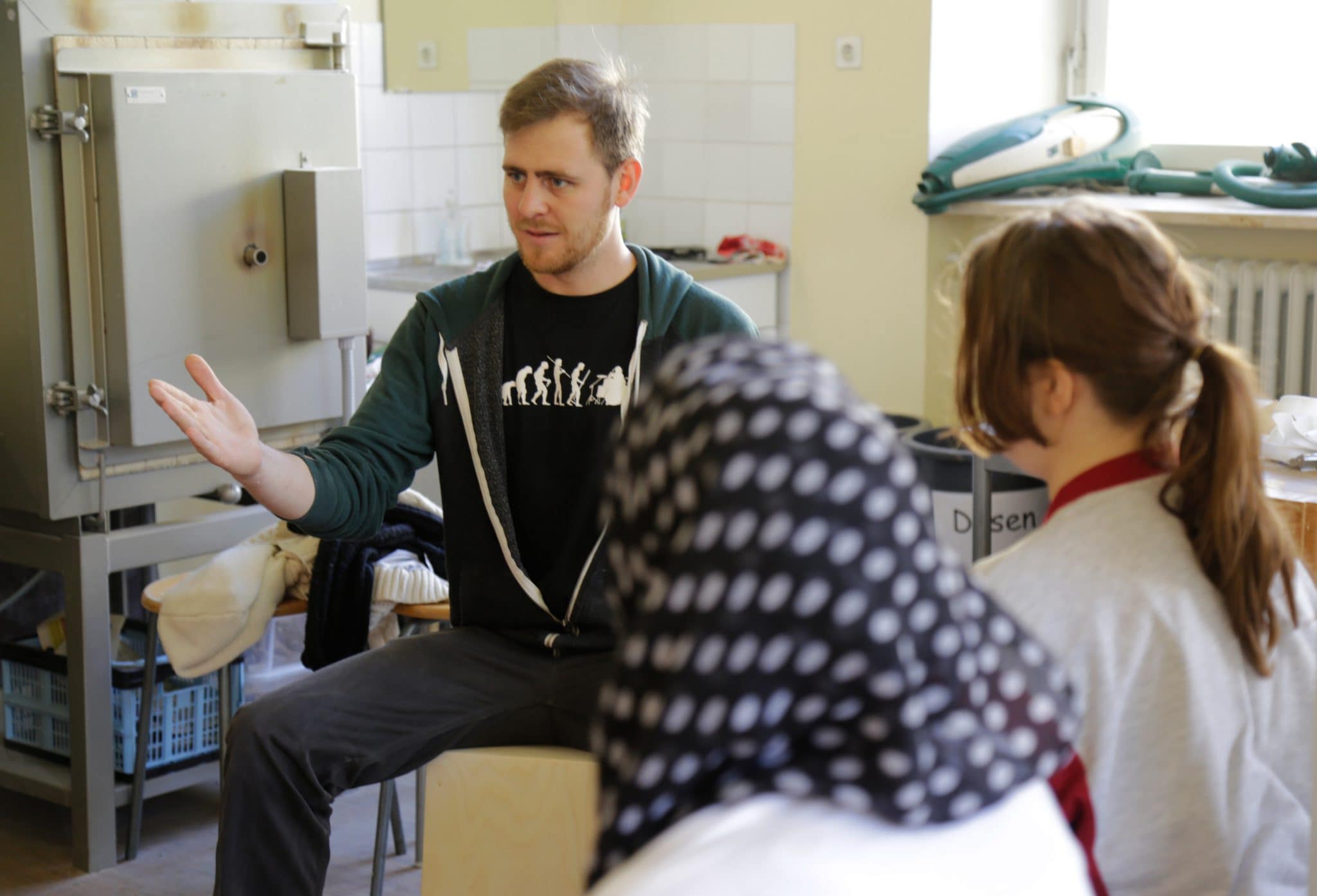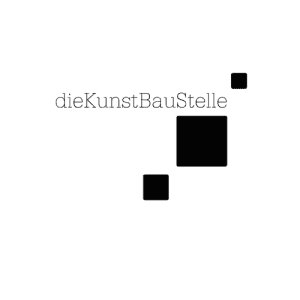from Andrea Schmelzle
In cultural refugee and youth work, the Landsberg cultural association “dieKunstBauStelle e.V.” teaches cultural mediation techniques on a national and international level in cooperation with the theater “Die Stelzer”.
Landsberg am Lech, 27 June 2016: The Landsberg cultural association “dieKunstBauStelle e.V.” is increasingly bundling its know-how and expertise in the field of cultural youth work as an organizational body and is active at national and international level with the teaching of cultural techniques. The principle of training trainers in order to achieve a multiplier effect is always at the forefront: local trainers are trained as multipliers under professional guidance, who in turn train further trainers and provide children with cultural activities.
The format was developed by the director of “Die Stelzer” theater, Wolfgang Hauck, and has been implemented in Turkey together with members of the ensemble since 2014. The work with stilts forms the basis, which is combined with other activities such as costume construction, music or circus techniques as “social circus”. Working with stilts in particular has proven to be an excellent means of trauma education.
It all started in Landsberg am Lech with stilt courses. Back in 2008, “Die Stelzer” gained experience working abroad with street children in Morocco. This was followed by courses at schools and, as part of the open-air theater “Licca Line”, the development of a youth group over more than four years. The model of the stilts, which was originally constructed with the Landsberg vocational school for the play “Licca Line”, is now in use all over the world – in Austria, Northern Ireland, Italy, Iraq and Turkey.

Culture as a perspective: international work in Turkey
Since 2014, “Die Stelzer” have been working with refugees in Turkey as part of their “Cultural Relief Program”. In part directly on the Turkish-Syrian border in refugee camps and in the city of Mardin. The activities have now been extended to Istanbul. As around 250,000 refugees live in the Turkish metropolis alone, the model project is being transferred there in order to multiply the effect. This involves working with aid organizations that offer a wide range of refugee support services in Turkey, such as the “Foundation for the Refugee Education Trust – RET” – in Kiziltepe, or the “Red Crescent” in Istanbul. The Goethe-Institut Istanbul is involved as an organizer and sponsor, and the NGO “Her Yerde Sanat Derneği” from Mardin acts as a local partner to the respective refugee camps and the Turkish administration. This cooperation enables “Die Stelzer” to offer and carry out the relevant training courses.
The often traumatized young refugees not only need basic humanitarian care, but also perspectives and rays of hope in their everyday lives full of hardship. “The longer the refugees stay in one place – and this also applies to the situation here – the greater the need for culture and education,” explains Wolfgang Hauck, initiator of the Cultural Relief Program. “Culture, theater, dance and music are becoming immensely important for young people. On the one hand, to improve their life situation, and on the other, to prepare and support their independent participation in life.”

“Simple stilts or hammer handles as percussion instruments are enough to make a difference here,” continues Hauck. “It’s an important experience for the children that, despite everything they’ve been through, they can get back to an everyday life where there is something like fun, joy and friends.”
Just a few days ago, he returned from a nine-day stay in Istanbul. He was once again supported by Landsberg residents Leonard Mandl from the Stelzer ensemble and Anselm Kirsch (percussion teacher). The reason for the trip this time was World Refugee Day on June 20, 2016 – and the team was in great demand:
“In Esenler – a district in Istanbul with 500,000 inhabitants – we offered our workshops on the children’s street in collaboration with the Insan Kaynaklari Gelistirme Vakfi foundation,” reports Hauck. “One day later, we were in Bakirköy – at the Hipodrom. Here, aid organizations and 500 children were invited to take part in various courses in cooperation with Project Lift. The next day, we finally went to Kücükcekmece, another district of Istanbul, for a stilt and circus workshop for educators from the Red Crescent social institution.
The Federal Foreign Office brings “Die Stelzer” to Berlin
Due to the international experience gained from cultural work with young refugees in Turkey, the Stelzer’s work is now also being requested at federal level. “In Berlin, we have presented our Cultural Relief Program twice to members of the Bundestag and experts from various committees,” reports Hauck. For example, at the “Moving People” forum in April this year: the entire spectrum of Germany’s foreign cultural and educational policy was presented over three days.
In August, they will be going to Berlin again for a presentation on the occasion of the Federal Foreign Office’s Open Day. “Workshops lasting several hours will be held in which young people from Iraq will work for us as trainers,” says Hauck. And they are good acquaintances of the Stelzer family, as they are the very young people who were once trained in the refugee camps in Turkey. “They have now fled to Germany, live in Berlin and support us as trainers,” says Hauck happily.
Funding from the Free State of Bavaria
The cultural projects of the dieKunstBauStelle association and the Stelzer are also in demand and recognized throughout Bavaria:
In Glonn, dieKunstBauStelle, together with the Stelzer and in cooperation with the Schloss Zinneberg youth welfare facility, runs an extracurricular educational measure to promote the linguistic and cultural integration of unaccompanied refugee minors together with German schoolchildren. “By combining physical and artistic activities, it is possible to provide special support in listening comprehension and speaking,” emphasizes Hauck. “Education and language acquisition is the first step towards successful integration into society.”

This educational project “KIDZ Zinneberg” also convinced the Ministry and is now receiving funding from the 2016 Cultural Fund of the Free State of Bavaria so that it can be continued alongside schools in the 2016-2017 school year.
“Back to the roots”: focus back on Landsberg and the surrounding area
Thanks to the success of projects such as “KIDZ Zinneberg” and film reports by the German Foreign Office, among others, more and more organizations and institutions have contacted Hauck to become active with similar models: In the Landsberg district, for example, a cooperation with “Sternenwünsche”, a project of the Rotary Club Ammersee-Römerstraße for children and young people aged five to 17, is now in preparation. A special cultural program for young people could be held as early as the coming summer vacations. A project week is planned with youth welfare facilities in the Landsberg district and the Ammersee region.
“It is important to us to support associations or projects where we can see that the money is actually felt and is not just ‘sand in the gears’,” says Silvie Braun, one of the “Sternenwünsche” ambassadors, explaining the motivation for supporting the KunstBauStelle. “We really appreciate the association and think it’s great how it brings very different cultures and people together with its projects. Much more needs to be done for children and young people in particular, because after all, children are the future – our future.”
And that applies to people all over the world, whether they come from Syria, Iraq, Turkey, Berlin or Landsberg.

